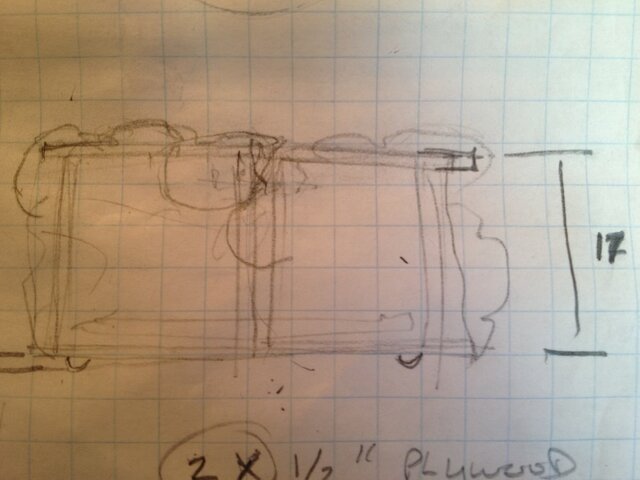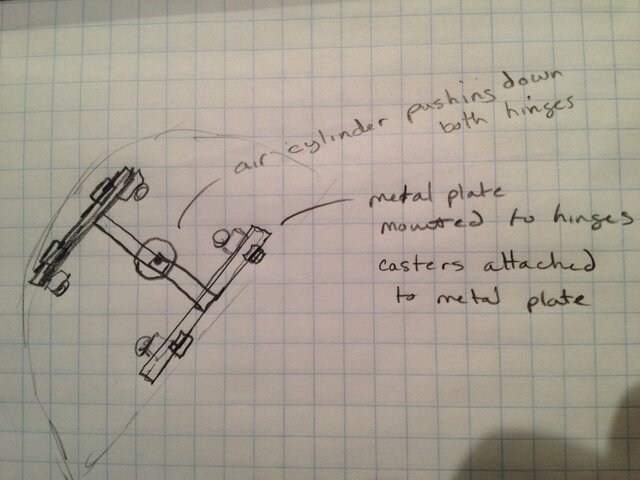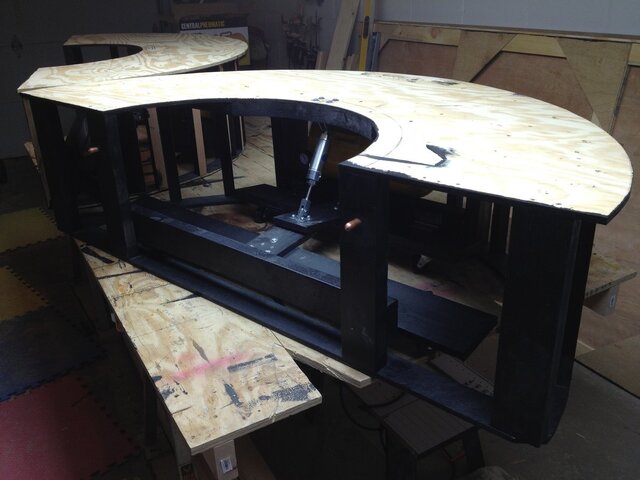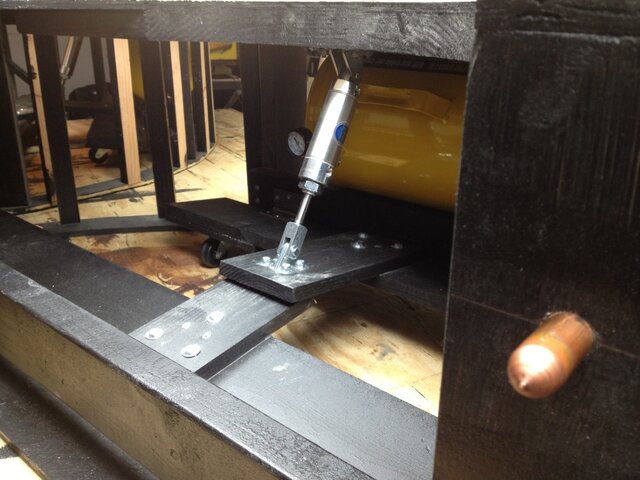freedomverse
Member
I am building a well for a production I am helping with. I have the frame finished but am stuck on getting the movement needed. I think that air cylinders could be my answer after looking at the thread by footer, "Who says only God can make a tree?". This is what this well needs to do:
Here is a very rough sketch:

My first idea was to install a electric scissor jack to the underside of the top of each well half. The bottom of the jack would attach to a piece of plywood with casters attached. When the jack was activated the casters would lower and lift the well. It did work but had two problems. First it was loud. Second, the jack was made cheaply and it's built in switch failed to stop it in time and it got stuck in the bottom position and the gears broke the next time the up button was activated. Since I cannot risk this happening on stage I am moving to plan b, pneumatics.
I guess I have a couple of questions. Each half of the well will be about 30 pounds or so after the art department gets done adding their rocky looking-ness to it. If I go with these air cylinders do I need one for each caster or is it possible to make one cylinder move a three casters mounted on a 2'x1.5' plywood? I think I only need about one inch of movement.
How do I determine what size tank I would need to be able to move each peice about 6 times each performance?
Any other suggestions that might help. This would be my first dive into air powered stuff. I am also open to other methods of making this work.
This site has been so helpful the last couple of years as I have built props and scenery. Thank you all for sharing your knowledge. This is my first post.
- it splits in half to become two curved stone looking walls
- it must roll and then not roll so the actor can sit or stand on it.
- it must come together to form a well.
- it needs to be easy enough for the women actors to do all shifting.
- it is 17" tall and has a 5'6" diameter
Here is a very rough sketch:

My first idea was to install a electric scissor jack to the underside of the top of each well half. The bottom of the jack would attach to a piece of plywood with casters attached. When the jack was activated the casters would lower and lift the well. It did work but had two problems. First it was loud. Second, the jack was made cheaply and it's built in switch failed to stop it in time and it got stuck in the bottom position and the gears broke the next time the up button was activated. Since I cannot risk this happening on stage I am moving to plan b, pneumatics.
I guess I have a couple of questions. Each half of the well will be about 30 pounds or so after the art department gets done adding their rocky looking-ness to it. If I go with these air cylinders do I need one for each caster or is it possible to make one cylinder move a three casters mounted on a 2'x1.5' plywood? I think I only need about one inch of movement.
How do I determine what size tank I would need to be able to move each peice about 6 times each performance?
Any other suggestions that might help. This would be my first dive into air powered stuff. I am also open to other methods of making this work.
This site has been so helpful the last couple of years as I have built props and scenery. Thank you all for sharing your knowledge. This is my first post.





